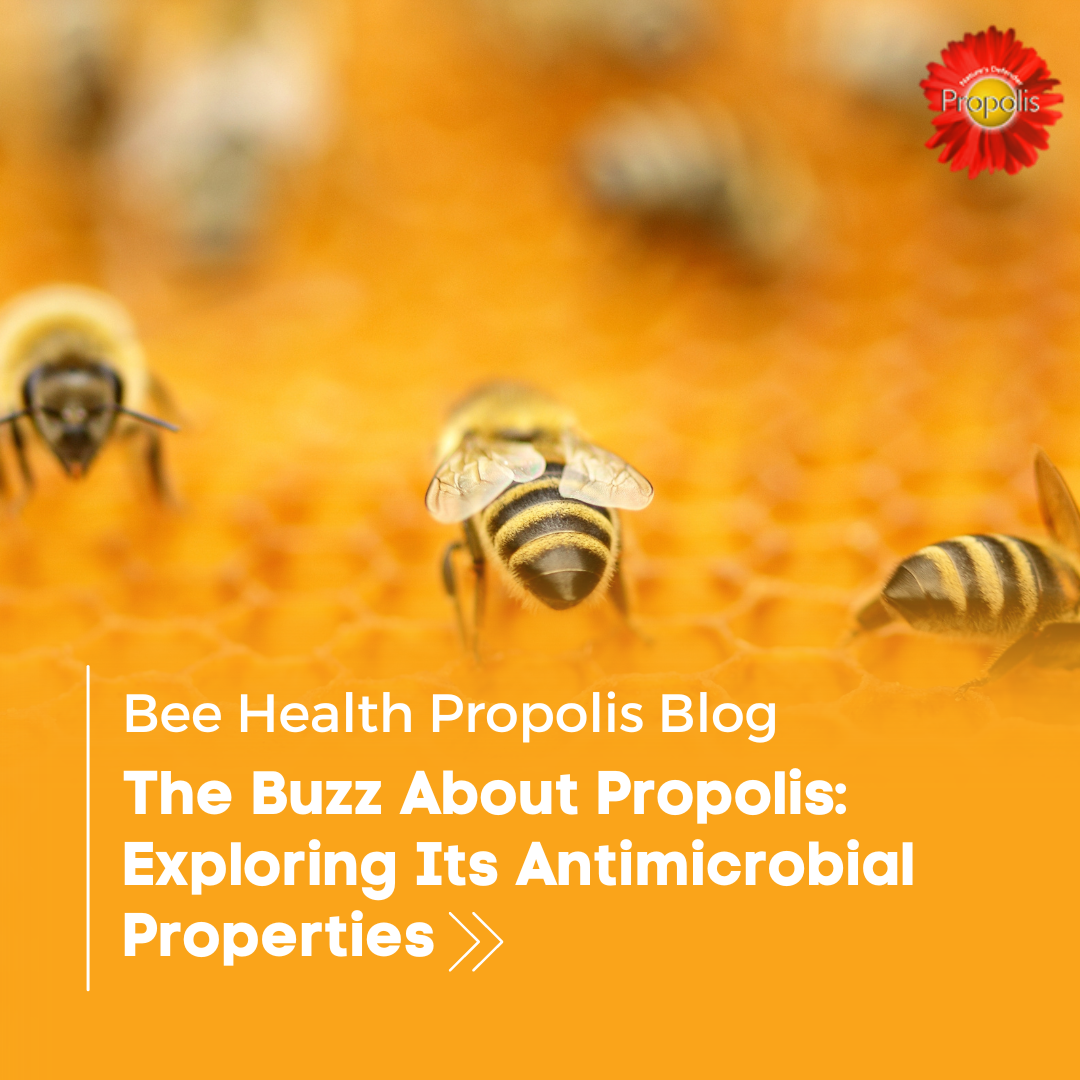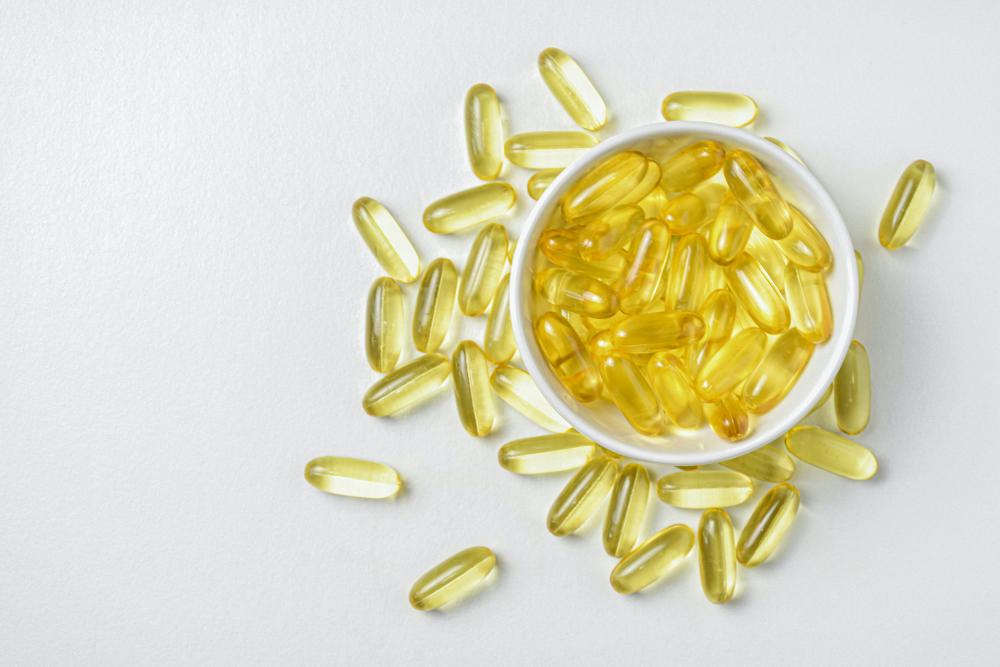The Buzz About Propolis: Exploring Its Antimicrobial Properties

Take a peek inside a beehive, and it's clear that bees are masters of manufacturing. Their ability to transform flowery nectar into sweet honey gets all the glory, but honeybees produce another prized substance that's creating a buzz in the medical world - propolis.
What exactly is this mysterious "bee glue", and why are researchers eager to unlock its antimicrobial secrets? We provide more colour below.
Nature's Germ Defender
Propolis is a resinous substance honeybees make by blending deciduous plant resins with beeswax and enzymes from their salivary glands.
Propolis has broad-spectrum antibacterial activity against gram-positive and gram-negative pathogens [1], making it a powerful natural protectant within beehives and a potential medical marvel for the human world.
Even more incredibly, research has shown that propolis is effective against some antibiotic-resistant "superbug" strains like MRSA [2].
Tracing Its Roots
Propolis has such impressive germ-killing chops because of its unique chemical makeup, which can vary substantially depending on the biogeographical region and specific botanical sources accessed by the bees.
There are over 300 biologically active compounds within propolis samples [3]:
- Flavonoids like pinocembrin, kaempferol, and quercetin.
- Phenolic acids such as ferulic, caffeic and cinnamic acid.
- Terpenes and diterpenes like totarol and artepillin C.
These plant-derived chemicals attack bacteria by disrupting cell membranes, inhibiting enzyme activity, preventing biofilm formation, and more. Modern science is scrutinising these synergistic effects.
A Deep Dive
Flavonoids like quercetin can directly inhibit bacterial DNA gyrase and topoisomerase, stopping the pathogens' replicating ability.
Propolis also exhibits synergistic effects when combined with various antibiotics, enhancing their efficacy against MDR bacteria [4]. Studies have reported synergy between propolis and antibiotics like ciprofloxacin, ceftazidime, amoxicillin, ampicillin, chloramphenicol, and others against resistant strains.
Quercetin, in particular, has been shown to bind directly to the DNA gyrase enzyme in bacteria like E. coli - critical for bacterial DNA replication and cell division. Inhibiting DNA gyrase shuts down reproduction, preventing the bacteria from increasing further.
Then we have compounds like artepillin C - one of the signature phenolic acids ubiquitous in Brazilian propolis. While it does display direct antibacterial effects by compromising cellular integrity, artepillin C also packs an anti-inflammatory punch, modulating pathways like NF-κB, and impacting the expression of inflammatory mediators.
Other flavonoids, like apigenin, exhibit different modes of attack. Research indicates apigenin can disrupt the cytoplasmic membrane in certain gram-negative strains, causing leakage of essential ions and nutrients. Some evidence suggests it may target the bacterial efflux pumps that confer antibiotic resistance.
Other components, such as artepillin C, modulate inflammatory pathways to enhance immune defences, helping the human body fight infection.
Some geographic regions, like the Middle East, produce exceptionally antimicrobial-rich propolis compared to areas like Europe or North America [5], perhaps attributable to bacterial and plant species diversity in these locales.
Gram-Positive and Gram-Negative
The difference between a gram-positive and gram-negative bacterium is determined by its cell wall structure – positive types have thick walls of peptidoglycan layers, while negative ones have a thin wall with an outer membrane.
Gram-positive bacteria are generally more susceptible to the antimicrobial compounds found in propolis because they lack an outer membrane.
Propolis has been found to have broad-spectrum capabilities, meaning the antimicrobial properties can overcome both types.
Applications on the Horizon
While most of the research has focused on propolis's raw antimicrobial potential, translating those properties into viable clinical applications is the next exciting frontier. Some innovative concepts currently being explored:
- Propolis lozenges and throat sprays for sore throats and health boosts.
- Propolis creams for skin conditions.
- Toothpastes and mouthwashes to combat gum disease and tooth decay.
- Antibiotic adjuvants combining propolis extracts with conventional drugs to enhance their efficacy and overcome resistance.
- Propolis-laced wound dressings and topical treatments.
A few propolis-based treatments are already commercially available in specific global markets. But as our understanding of this bee-derived treasure deepens, we will surely see an influx of new antimicrobial products entering hospitals, households, and food industries worldwide.
An Anti-Fungal Aid
Propolis extracts inhibit the proliferation and spread of some yeasts [6], including Candida albicans and the infectious mould Aspergillus.
Research shows that propolis blocks the growth of drug-resistant species like C. glabrata and C. krusei. Ingredients like the acids caffeic, ferulic, p-coumaric, and benzoic likely mingle forces with flavonoids such as pinocembrin, chrysin, galangin, quercetin, and apigenin to overwhelm invasive fungus through a flexible multi-pronged attack strategy.
Summing Up
While science is just now deciphering its intricate chemical composition, propolis has been used in ancient folk medicine remedies for centuries.
Those venerable traditions recognising its infection-fighting virtues reinforce how invaluable this natural substance could prove for modern medicine.
As the antimicrobial resistance crisis continues straining our synthetic drug arsenal, turning to sources like propolis may be a vital part of the solution. The humble honeybee could very well have the next superbug-busting breakthrough locked within its resinous reserves. We'd be wise to keep pursuing this peculiar bee product's full potential.






